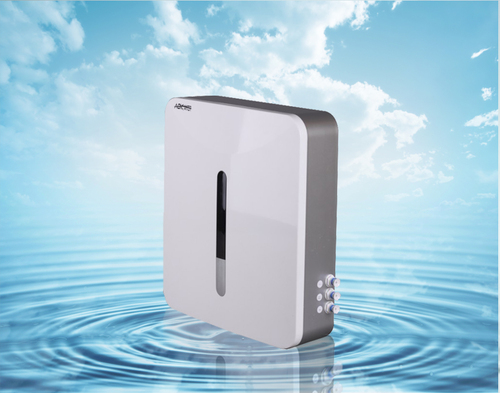Not using a water filtration system yet? You might want to reconsider..
Posted by Intelgadgets on 13th May 2015
Take a look around you right now.. Whether you’re at the office, a cafe, or even your own kitchen.. How many bottles of water do you see right now?
Chances are, you’ve got a least one in your line of sight right now. That’s because over the past 10 years, bottled water usage has increased exponentially. There’s a number of reasons for that, from concern over the safety of tap water to the convenience factor. And we all know that it’s costing us both environmentally and financially. But you know what’s really crazy? 24% of the bottled water market is held by Pepsi and Coke through their Dasani, Aquafina, and Glaceua brands. Another 9% is held by Nestle, for a combine 33% of the market. And you know where that water is sourced? Municipal water. (Source: Statista.com)
And that’s fine. But you know what? That means it’s NO DIFFERENT than filtering your own tap water at home.
And for the sake of comparison, let’s say you drank your 8 glasses of water a day from bottled water, vs. filtering at home. That’s going to cost you $1,400 PER YEAR vs. less than $60 per year, filtering your own. That’s a heck of a convenience tax for something that adds back in it’s own set of chemicals from leaching plastic bottles. (Source: banthebottle.net)
At home water filtration systems aren’t looking so expensive now, are they?

So now that we’ve reviewed WHY you might want to consider water filtration systems for your home, let’s talk about some options.
- Water Pitchers and tap-mount
filters: Popularized in the 90s by Brita, these options use
granulated charcoal to filter water, reducing chlorine and making a
huge impact on the taste of your tap water.
What they don’t do a great job with are VOCs (Volatile Organic Chemicals), flouride, heavy metals, or endocrine-disrupting chemicals that are commonly present in municipal water.
- Distillation – The method
of distillation purifies water by heating it and then recapturing
the steam in a cooling chamber, where it is condensed back into
water. This process allows large-particle contaminents, such as
minerals and heavy metals to “drop off” of the water molecules.
Due to the heating process, it is also very effective at killing
bacteria.
These systems are available in sizes ranging from whole-house to counter-top, offering a range of solutions for a variety of needs.
Worth noting: Because this method requires a heating element, it will not work in a power outage, and it does use a fair amount of electricity to run. And while it does a FANTASTIC job on a wide range of contaminants, VOCs and endocrine disruptors are not effectively filtered through distillation. - Reverse Osmosis – This
method purifies water by drawing it through a fine membrane to
remove contaminants and is often paired with a charcoal filter,
which works to improve the taste.
Unfortunately, while RO filters do a great job on a number of contaminants, including flouride, heavy metals, arsenic, and asbestos, they are not very effective at removing VOCs and endocrine disruptors from the water.
And for every gallon of water produced, several are wasted, which coupled with it’s slower speed, make its best use filtering drinking/cooking water rather than whole-house filtration. - Solid
Block Carbon Filters - Solid
carbon block filtration uses gravity to pull water through the solid
carbon filter, meaning it is unaffected by power outages, and even
comes in portable “to-go” options (meaning you can skip the
vending machine later and refill from any sink). It is also one of
the most effective means of removing all common contaminants from
tap water.
Solid block carbon water filters not only improve the taste of water (as do their granulated cousins), but they remove VOCs, heavy metals, chlorine, fluoride, nitrates/ites, bacteria, and even parasites with their inexpensive carbon filters.
And while the counter-top systems do take up counter space, and still require manual filling, the inexpensive carbon filters make these hard to beat for maximum water purification.
Buy Intelgadgets water filtration system
